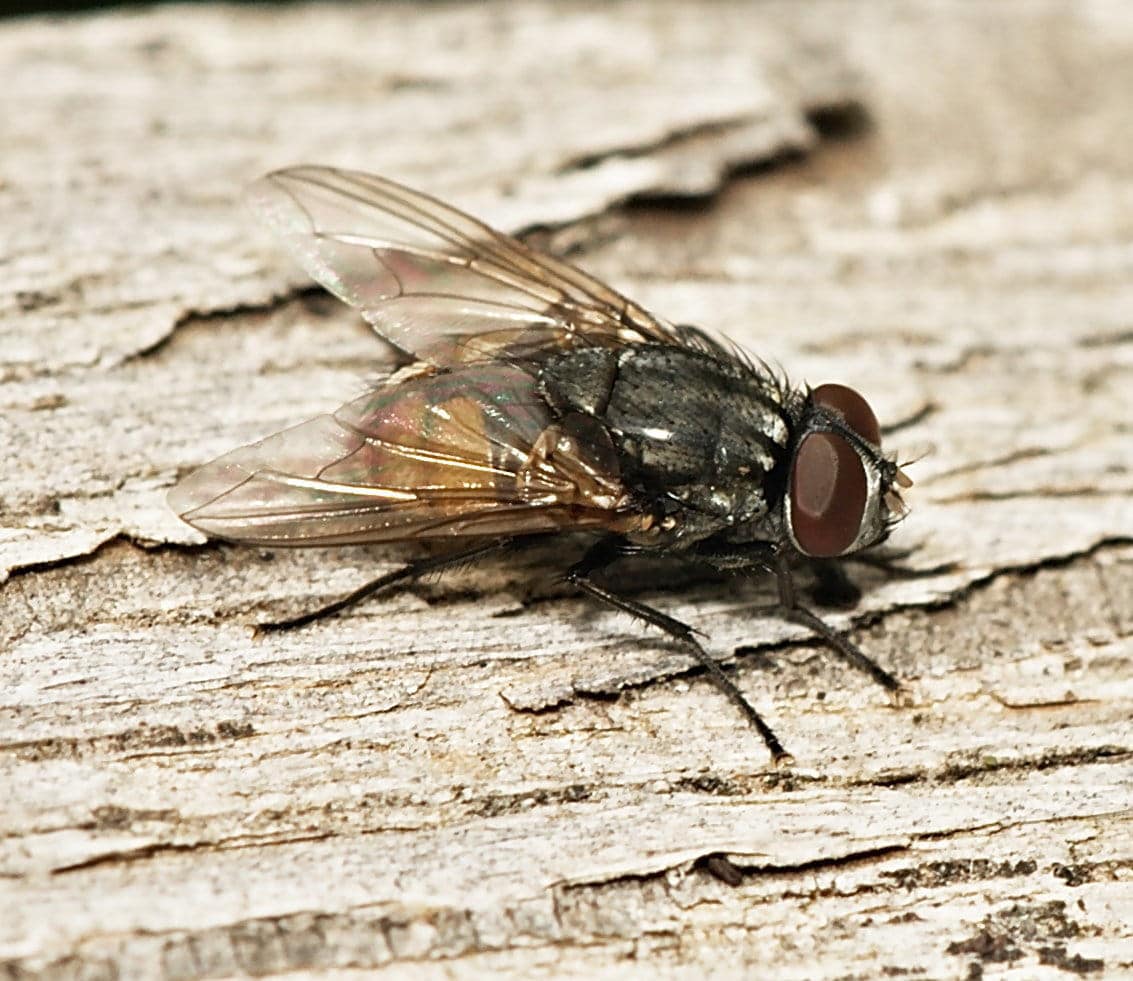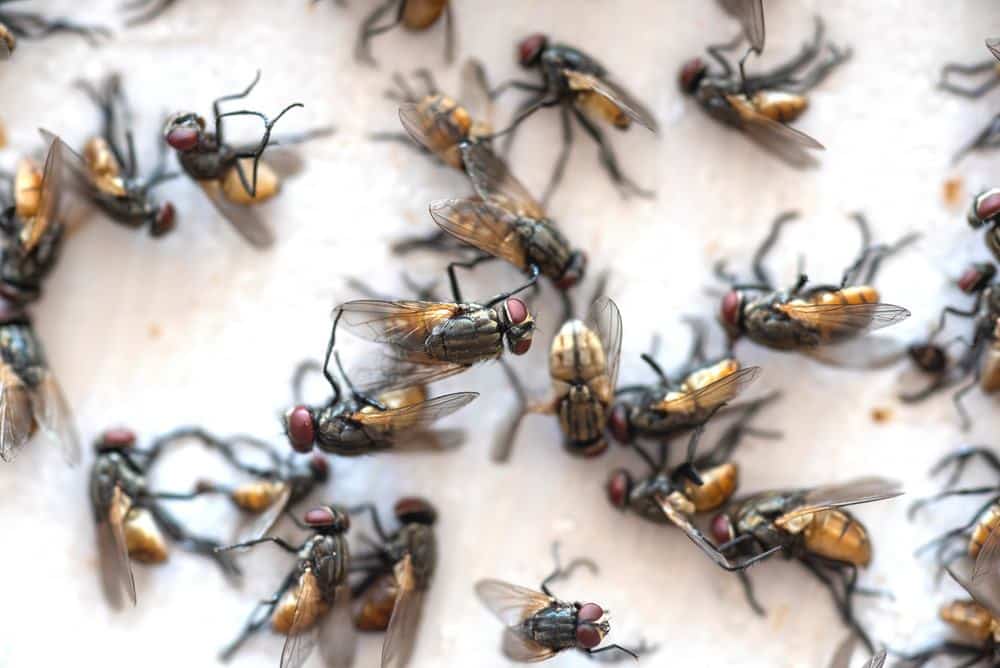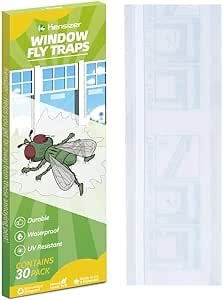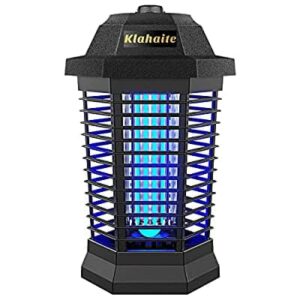One or two houseflies flying about your home may not seem like a huge deal, but the buzzing and their erratic flight patterns could drive you up the wall. Yes, these intrusive insects do not bite, but there are plenty of reasons to want them out of your living spaces.
House flies carry and transmit various diseases and pathogens, contaminate food, trigger allergic reactions, and even cause property damage. Given the high stakes, how do you eliminate them?
Preventive measures, targeted interventions, and sanitation practices, and targeted interventions will help you regain control and bid farewell to houseflies.
How To Get Rid Of House Flies
1. Keep Your Home Clean and Hygienic
A clean, hygienic home is your first line of defense against houseflies. This is because these insects are attracted to filth, decaying organic matter, and food residue, so keeping your environment clean makes it less appealing.
Adopt these practices to keep your living spaces unattractive to houseflies:
a) Dispose of Garbage Properly
Regularly empty your garbage in bins that have tight-fitting covers to keep houseflies out. Also, empty and clean your bins as much as possible to eliminate odors that attract flies.
Furthermore, properly placing your outdoor garbage bins is vital- keep them away from entry points to minimize the chances of flies entering your home.
b) Store Food Properly
The enticing smell of food is enough to have houseflies keep knocking. Avoid this by storing your food in airtight containers and ripe fruits and vegetables in the refrigerator to reduce the likelihood of attracting flies.
Read More:
c) Keep Your Kitchen Surfaces Spotless
Leaving any food crumbs and spills on your kitchen surfaces, countertops, and dining areas will entice houseflies, so make sure these surfaces stay clean at all times. Focus on around sinks and trash cans because food residue can gather in these places.
Moreover, frequently clean your stovetops, microwaves, and other appliances. That’s not all; regularly clean and disinfect surfaces you frequently touch, such as doorknobs, light switches, and tabletops as well.
Related Posts:
- How to Get Rid of Lice in Your Home
- How To Get Rid Of Fruit Flies
- How To Get Rid Of Pantry Moths Naturally
d) Clean Pet Areas
In your quest to maintain a clean home, do not forget your pets. Clean their water and food bowls often to remove any leftover food.
f) Manage Your Compost Bins
In order to keep flies from congregating in your compost, use a sealed compost bin and regularly turn the compost. Additionally, avoid composting meat or dairy products, as they strongly attract houseflies.
g) Empty and Clean Drains
The best breeding grounds for houseflies are damp, dirty areas, including drains. Therefore, regularly clean and disinfect your drains to eliminate potential breeding grounds. Consider using a mixture of baking soda and vinegar followed by hot water to keep the drains clean and odor-free.
Also, promptly fix any leaks, ensure that damp areas are well-ventilated, and wipe down wet surfaces, such as bathroom counters and shower walls, to discourage fly activity.
2. Seal Entry Points
Like any other insect, houseflies enter your home through various openings- they can exploit even the smallest gaps. Diligently sealing these areas helps you create a formidable defense against these insects.
Inspect your home for cracks and gaps in different spots like cables, walls, doors, pipes, electrical outlets, and windows, then seal any openings with caulk or weatherstripping. Also, make sure your doors and windows have thresholds for a tight seal.
3. Use Natural Remedies to Get Rid Of House Flies
Try these natural remedies against houseflies.
i) Dish Soap and Vinegar
This mixture creates a trap that lures flies and prevents them from escaping. The vinegar lures the houseflies to the solution, while dish soap makes them sink. Pour equal amounts of apple cider vinegar or white vinegar and dish soap into a jar or bowl, then mix them.
Position this trap in areas most frequented by flies, like kitchen counters or near trash cans.
ii) Essential Oils
Spray essential oils derived from plants like peppermint, eucalyptus, lavender, tea tree, cinnamon, citrus, and lemongrass around housefly-prone areas. Alternatively, place the essential oil into a diffuser.
iii) Diatomaceous Earth
Sprinkle diatomaceous earth in areas where flies are prevalent. It will help dehydrate and kill them.
iv) Fly-repellent Plants
Harness nature’s power by planting plants and herbs that naturally repel houseflies in your garden, around your home, or indoors. Notable examples of these plants include basil, lavender, mint, chrysanthemum, marigold, citronella, rosemary, catnip, petunias, and bay laurel.
Note
Houseflies can adapt to different scents, rendering the fly-repelling plants on your property ineffective. Fortunately, you can counter this by rotating the locations of potted plants or replanting them periodically.
v) Cucumbers
Cucumbers have a strong scent capable of deterring houseflies, especially when combined with other ingredients like vinegar, citrus, or mint sachets. Cut a cucumber into thin slices, then place them strategically on windowsills, kitchen counters, and other areas houseflies frequently visit.
vi) Cloves
There are many ways you can use cloves to keep houseflies at bay. These include:
- Insert whole cloves into a citrus fruit, covering its surface, then place the clove-studded citrus fruit in fly-prone areas.
- Mix whole cloves with bay leaves, then fill small cloth sachets with the mixture and position them in housefly-prone areas.
- Crush cloves, mix them with olive oil, then apply the mixture on housefly-prone surfaces.
- Place a jar containing water and whole cloves in fly-prone areas.
- Place whole cloves with dried orange peels in a decorative bowl or potpourri sachet, then display the potpourri where you want to repel houseflies.
vii) Citronella Candles
Repel houseflies by strategically positioning citronella candles outdoors.
viii) Jar Trap
Fill a jar with apple cider vinegar or sugar water, then add dish soap. Place plastic wrap over the jar’s opening and fasten it in place using a rubber band. After that, poke small holes in the plastic wrap to allow flies to enter and place the jar in housefly-prone areas.
4. Biological Control
Another way you can keep the housefly population in your home in check is through biological control methods and natural predators. Some strategies to consider are:
- Apply entomopathogenic fungus where flies are problematic to infect and kill houseflies.
- Encourage the presence of barn swallows and bats on your property.
- Release some parasitic wasps outdoors to target fly larvae. These wasps lay eggs inside or on fly pupae. They then consume the pupa when the larva hatches, ultimately reducing the housefly population.
- Plant Venus Flytrap- This fascinating carnivorous insect has the ability to capture and kill insects. While these plants have a limited range of capture, they can still capture and digest houseflies. However, do not expect it to handle the housefly population in your home fully. Nonetheless, consider placing them near windows or in fly-prone areas to help reduce the population.
- Apply microbial larvicides containing Bacillus thuringiensis israelensis (BTI) to standing water, breeding sites, and areas with water accumulation around your home to control the housefly larvae population.
5. Commercial Housefly Control Solutions
There are many products you can buy and use to eliminate the houseflies in your home. They are widely available and cater to different needs, including preventing and killing houseflies. You can resort to these products when dealing with a severe infestation, looking for quick results, or if everything else fails.
a) Electric Fly Zappers
These devices attract and kill flying insects, including flies, mosquitoes, and other flying pests. They use UV light to entice insects, and once the insect touches the electrified grid, they get electrocuted.
Install these products in your home’s most problematic areas, like the kitchen.
b) Fly Paper Strips
These traps are cost-effective, simple, and effective against houseflies, especially indoors. They are ideal, particularly in places you shouldn’t use chemical insecticides. They attract flies by their appearance and the adhesive’s scent.
When houseflies come into contact with the sticky adhesive, they become trapped and are unable to fly away. The adhesive immobilizes the flies, preventing their escape. Over time, the fly may become wholly enveloped in the sticky substance.
Hang fly paper strips in areas near windows, doors, kitchens, garbage bins, and other areas where flies are prevalent.
c) Pyrethrin-based Insecticide
Insecticides are highly effective against large populations of houseflies. Pyrethrins are known for their quick action against insects by affecting the nervous system of pests, leading to rapid paralysis and death.
Pyrethrin-based Insecticides are more environmentally friendly than some synthetic chemical insecticides because pyrethrins break down rapidly in the environment. Their low toxicity to mammals makes them more desirable.
d) Light Trap
Also called fly zappers or insect light traps, these devices use light to attract flies, then depending on the light trap you have, the housefly will be trapped or zapped. When positioning your light trap, choose a place that ensures the trap is the only light source to increase its effectiveness.
When choosing light traps, consider your needs since some are made for indoor use while others are for outdoor use. Also, ensure your light trap has safety features like protective grids and shrouds.
Summary Thoughts
You can easily kill a housefly by swatting. Unfortunately, if you see one fly inside your home, more are probably nearby. Fortunately, you can banish houseflies from your home by implementing the strategies above. Keeping a clean home, sealing entry points, utilizing natural remedies, and targeted interventions will help make your home less desirable to these insects.

I’m Mike Hyle, an exterminator with 7+ years of experience handling all sorts of pests, including mice, cockroaches, bed bugs, and termites. I also write for Pest Solutions DIY blog to share my knowledge and help homeowners keep their homes pest-free. Outside work, I enjoy hunting, snowshoeing, and exploring nature. Check out my blog for helpful pest control tips!





